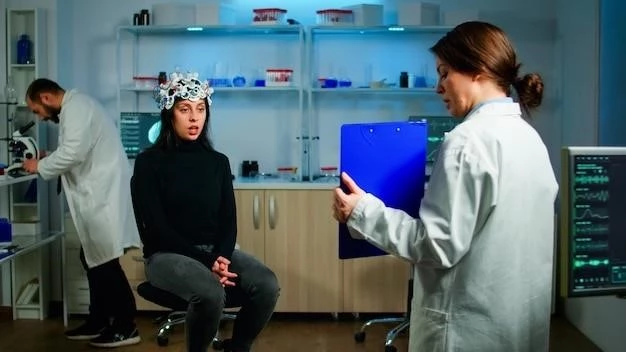Introduction to Neuronal Heterotopia
Neuronal heterotopia refers to brain malformations resulting from deficits of neuronal migration․ Individuals with heterotopias show a high incidence of neurological deficits, such as epilepsy․ More recently, it has come to be recognized that focal heterotopias may also show a range of psychiatric problems, including cognitive and behavioral impairments․ However, because focal heterotopias are․․․
Definition and Overview
Neuronal heterotopia refers to brain malformations resulting from deficits of neuronal migration․ Individuals with heterotopias show a high incidence of neurological deficits, such as epilepsy․ Recently, it has been recognized that focal heterotopias may present a range of psychiatric issues, including cognitive and behavioral impairments․ Focal heterotopias may have a profound impact on the affected individuals’ quality of life․

Causes and Symptoms of Neuronal Heterotopia
Neuronal heterotopia arises from deficits in neuronal migration during brain development․ This condition can lead to neurological deficits, primarily epilepsy, and may also present psychiatric issues․
Underlying Causes
Neuronal heterotopia arises due to disruptions in the process of neuronal migration during brain development, leading to the misplacement of neurons․ This abnormal migration can be linked to genetic mutations, environmental factors, or prenatal complications․
Associated Symptoms
Individuals with neuronal heterotopia often exhibit a high prevalence of neurological deficits, with epilepsy being a common manifestation․ Additionally, these individuals may experience a range of psychiatric issues, which can lead to cognitive and behavioral impairments impacting their quality of life․
Types and Classifications of Neuronal Heterotopia
Gray matter heterotopia (GMH) and periventricular nodular heterotopia (PNH) are common types of neuronal heterotopia․ GMH involves ectopic clusters of neurons, while PNH features nodules of grey matter along the ventricular walls․
Gray Matter Heterotopia (GMH)
Gray matter heterotopia (GMH) manifests as ectopic clusters of neurons in the brain and is classified as a group of neurological disorders associated with abnormal positioning of neurons․ These clusters can be observed along the ventricular walls, typically seen in periventricular nodular heterotopia (PNH) or as nodules in the deep white matter․
Periventricular Nodular Heterotopia (PNH)
Periventricular nodular heterotopia (PNH) is a prevalent form of neuronal heterotopia characterized by nodular masses of gray matter located along the lateral ventricles of the brain․ These nodules are a result of abnormal neuronal migration during fetal brain development, leading to neurons being out of their expected locations along the ventricular walls․

Diagnosis and Treatment of Neuronal Heterotopia
Diagnosis of neuronal heterotopia often involves neuroimaging studies like MRI to identify brain malformations․ Treatment options vary and may include antiepileptic medications, surgical resection in some cases, and supportive therapies to address associated symptoms․
Diagnostic Procedures
Diagnosis of neuronal heterotopia typically involves neuroimaging techniques such as magnetic resonance imaging (MRI) to visualize brain malformations and identify areas of abnormal neuronal clustering․ Genetic testing may also be employed to investigate underlying causes of the condition․
Treatment Options
Treatment for neuronal heterotopia can involve a multidisciplinary approach․ Antiepileptic medications are commonly used to manage seizures associated with the condition․ In some cases, surgical interventions may be considered to remove problematic nodules or clusters of neurons․ Supportive therapies, including occupational and speech therapy, can be beneficial in addressing cognitive and behavioral issues․
Research and Advances in Understanding Neuronal Heterotopia
Recent studies have focused on the genetic and environmental factors contributing to neuronal heterotopia․ Advances in neuroimaging and molecular genetics have led to a better understanding of the underlying mechanisms driving this brain malformation․
Current Studies and Findings
Research on neuronal heterotopia has focused on understanding the genetic and environmental factors contributing to this brain malformation․ Recent studies have utilized advanced neuroimaging techniques and molecular genetics to explore the underlying mechanisms of neuronal migration disorders and their association with conditions like epilepsy and intellectual disabilities․
Technological Innovations in Research
Recent technological advancements in research on neuronal heterotopia have enabled the use of advanced neuroimaging techniques such as functional MRI (fMRI) to study brain malformations and neuronal migration disorders․ Additionally, molecular genetic studies utilizing next-generation sequencing have provided further insights into the genetic underpinnings of these conditions․ These tools have enhanced our understanding of the complexities of neuronal migration and allowed for more targeted investigations into the pathophysiology of neuronal heterotopia․
